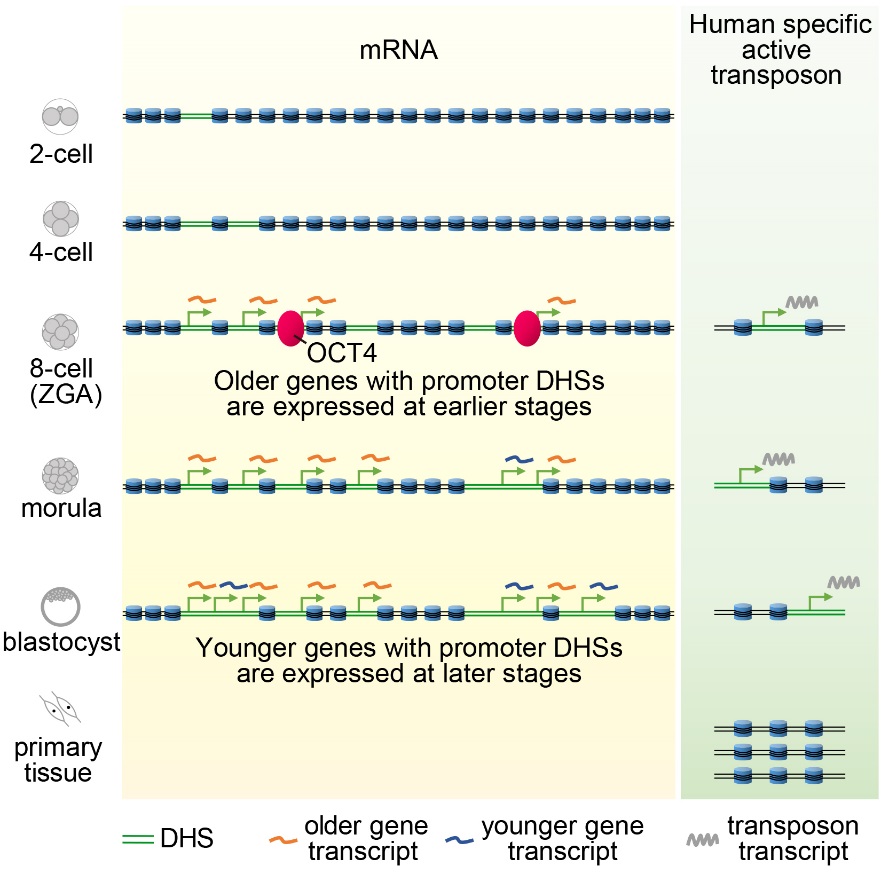
Human life starts from a fertilized egg. One of the most important questions in science is how a fertilized egg develops into a complicated organism with about 200 cell types and 36 important organs.
Humans have 25,000 genes, and different genes should be expressed at the right time and right place during human development. Setting the order of gene expression is called as “the Programming of Gene Expression”. Computer software is coded by computer language. Similarly, one of the language for the Programming of Gene Expression is called “Chromatin Accessibility”.
Recently, LIU Jiang’s group at Beijing Institute of Genomics of Chinese Academy of Sciences, cooperating with researchers from Center for Reproductive Medicine of Shandong University and Guangzhou Medical University, revealed how the “programming language” directs gene expression pattern in human early embryos. The findings were published in Cell.
Each cell in the human body can normally express more than 10,000 genes. During the first two days after fertilization, a very special period during human early embryogenesis, almost no genes are expressed in human embryos. Until now, it remains unknown how human genomes become active and start expressing new genes in early embryos.
The researchers established a method by using only 50 cells, far less than the traditionally a million cells, to investigate chromatin accessibility landscape. They find a key molecular OCT4 which plays crucial roles during zygotic genome activation.
During animal evolution, some genes are originated in the beginning of life on earth, and then these genes are very old genes. In contrast, some genes are originated in mammals, and then these genes are young genes. Specially, some genes are originated only in human, and then these genes are the youngest genes.
Interestingly, the researchers found that older genes usually start the expression at early embryonic stages, and younger genes usually start the expression at later stages. The reason was that the switch controlling the expression of older genes is turned on at earlier embryonic stage.
Besides, they found that DNA mutations can drive human evolution. Transposons, a class of DNA elements, can jump from one position to another in genome, which introduces DNA mutation. In human genomes, there are a limited number of transposon have the activity of mobility.
These transposons usually only have activity in early embryos, but not in differentiated tissues. Mutations generated in early embryos can higher change to pass into germ line, and then pass to the next generations. Therefore, activation of transposon in early embryos will have high impact on human evolution.
This study will help to understand the regulation of gene expression during human embryogenesis, and may benefit the assisted reproductive technology in the future.
LIU Jiang ’s group has published three articles in Cell concerning embryonic development. Their previous studies revealed the rule how DNA methylome is inherited in mammals and fishes.

 The dynamic landscape of open chromatin during early human embryogenesis provides a rich resource and insights into a zygotic genome activation. (Image by LIU Jiang's group)
The dynamic landscape of open chromatin during early human embryogenesis provides a rich resource and insights into a zygotic genome activation. (Image by LIU Jiang's group)

86-10-68597521 (day)
86-10-68597289 (night)

52 Sanlihe Rd., Xicheng District,
Beijing, China (100864)

